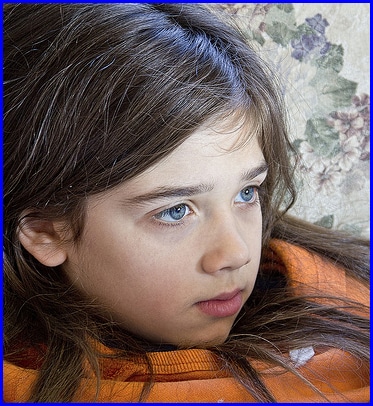Elaborated Intrusion (EI) theory was the topic, and we were examining the idea that food cravings can be quelled by diverting the mind in a couple of different ways. In the overwhelming majority of cases, a craving, or as the researchers characterize it, a desire, is accompanied by a mental picture. If the subject is asked to substitute a different mental picture, the first one is broken up, because the “mind’s eye” can only hold one picture at a time.
Another way to break up the image of the chocolate-covered bacon is for the subject to gaze at visual white noise or some kind of moving yet meaningless design, like an animated graphic. It gives the attention something else to fasten on, and is relaxing in a general kind of way, and relaxation reduces stress, so there is less disordered eating behavior.
Dr. Pretlow says:
Cravings, like obsessive compulsive behaviors, are a vicious cycle of stress inducing the craving, more stress from trying to resist the craving, more resulting craving, until the person finally caves, eats the food, then feels disappointed, which induces stress, so the cycle repeats. Like cravings, obsessive compulsive behaviors and nervous tics are helped by diverting the person’s attention.
Let’s give this EI stuff a hard test. Does it work against a cigarette habit? Apparently so.
“Visuospatial tasks suppress craving for cigarettes” was published by Jon May, Jackie Andrade, Nathalie Panabokke, and David Kavanagh in the June 2010 issue of Behavior Research and Therapy. They tested the EI hypothesis in the context of an addictive drug, nicotine, and said (among other things):
Experiment 1 showed that a mental visual imagery task with neutral content reduced cigarette craving in abstaining smokers… The effect of visual imagery was replicated in Experiment 2, which also showed comparable effects of non-imagery visual working memory interference… We conclude that visual imagery supports craving for cigarettes. Competing imagery or visual working memory tasks may help tackle craving in smokers trying to quit.
So, there you have it. And it works with food cravings, too, as Australian researchers Eva Kemps and Marika Tiggemann demonstrated. Their subjects were shown the “untuned TV set” flickering pattern of random motion, aka dynamic visual noise, or visual white noise, which cut down on both mental images and cravings. The report says:
They conclude that these experimental approaches may extend beyond food cravings and have implications for reducing cravings of other substances such as drugs and alcohol.
So, clearly we’re talking about addiction, or at least the dangerous potential for it. And there is a strong implication that the more capable someone is of forming a vivid mental image, the stronger their craving for the desired food will be. Which brings us to childhood obesity, because children are known to have very muscular imaginations. They can also be pretty much hypnotized by television.
While the child is in this exposed, zoned-out state, all kinds of nutty programming is funneled in. TV is full of content — violence, inappropriate sex, bloviating politicians, and most of all, FOOD. They soak up everything with sponge-like alacrity. With children constantly on the receiving end of junk-food propaganda, many adults see advertising as an invasion, or even an attack. Advertising is the dark side, preying on the suggestibility and vulnerability of kids, taking advantage of their weakness and brainwashing them.
But when therapy is the agenda, those same traits become positive. All that endearing openness is there to be taken advantage of and put to work for the greater good. Kids like to stare at motion, regardless of content. It gives the screen a lot of power, in the form of potential for change. Television uses it for trivial and unhealthy purposes. But as in the martial arts that turn the opponent’s strength back on the opponent, the vulnerability can be turned in a useful direction, to the pleasant task of replacing craving images.
Another way to look at the benefits of content-free motion, such as the visual white noise of the “untuned TV set,” is that it’s like the palate cleanser between tastings of wine. It clears the mind and washes away whatever picture was there. It is, in fact, a short-term vacation. Everybody needs a little vacation now and then, to relax and de-stress. Less stress, fewer cravings. Q.E.D.
Your responses and feedback are welcome!
Source: “Visuospatial tasks suppress craving for cigarettes,” ScienceDirect, 2010
Source: “The Psychology of Food Cravings,” ScienceDaily, 05/17/10
Image by chefranden, used under its Creative Commons license.


 FAQs and Media Requests:
FAQs and Media Requests: 












One Response
I think that anything will work if you really desire the outcome bad enough. It is about making the decision to do whatever or stop whatever.